Abstract
Plasmid profile typing has been used to subdivide phage-type 49 of Salmonella typhimurium, the most common phage type in humans in England and Wales since 1985. Twenty profile patterns have been identified in 350 strains examined. Four profile patterns have been identified in 143 isolates from patients infected in 33 epidemiologically unrelated incidents and two patterns have predominated, ST49:62 and ST49:62, 1. These patterns were also common amongst S. typhimurium phage-type 49 isolated from cattle and poultry; however ST49:62 was more common in bovines whereas ST49:62, 1 predominated in poultry. S. typhimurium phage-type 49 with a different profile pattern, ST49:62, 3, was responsible for a large outbreak in London in 1988 which was traced to mayonnaise made from eggs supplied by one producer. Plasmid profile typing can now be regarded as a method of supplementing phage typing in investigating outbreaks caused by this organism.
Full text
PDF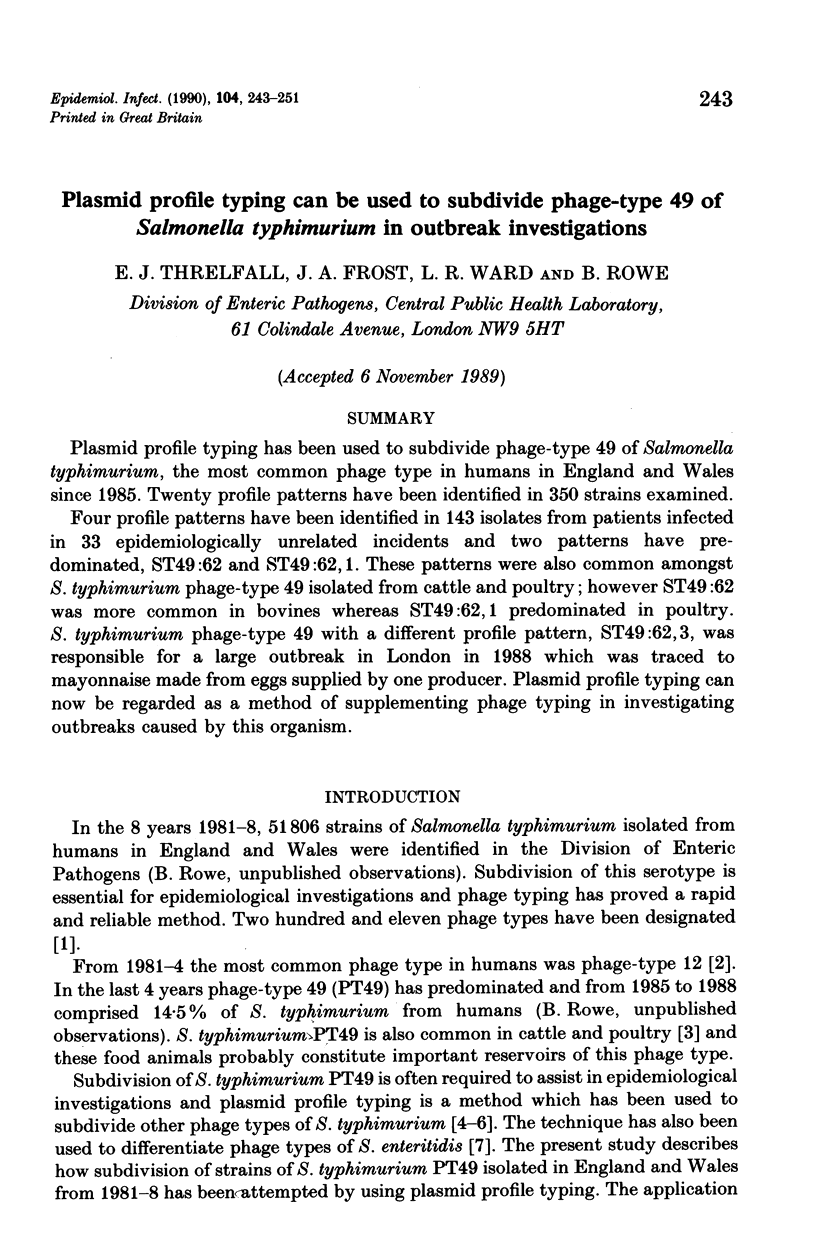
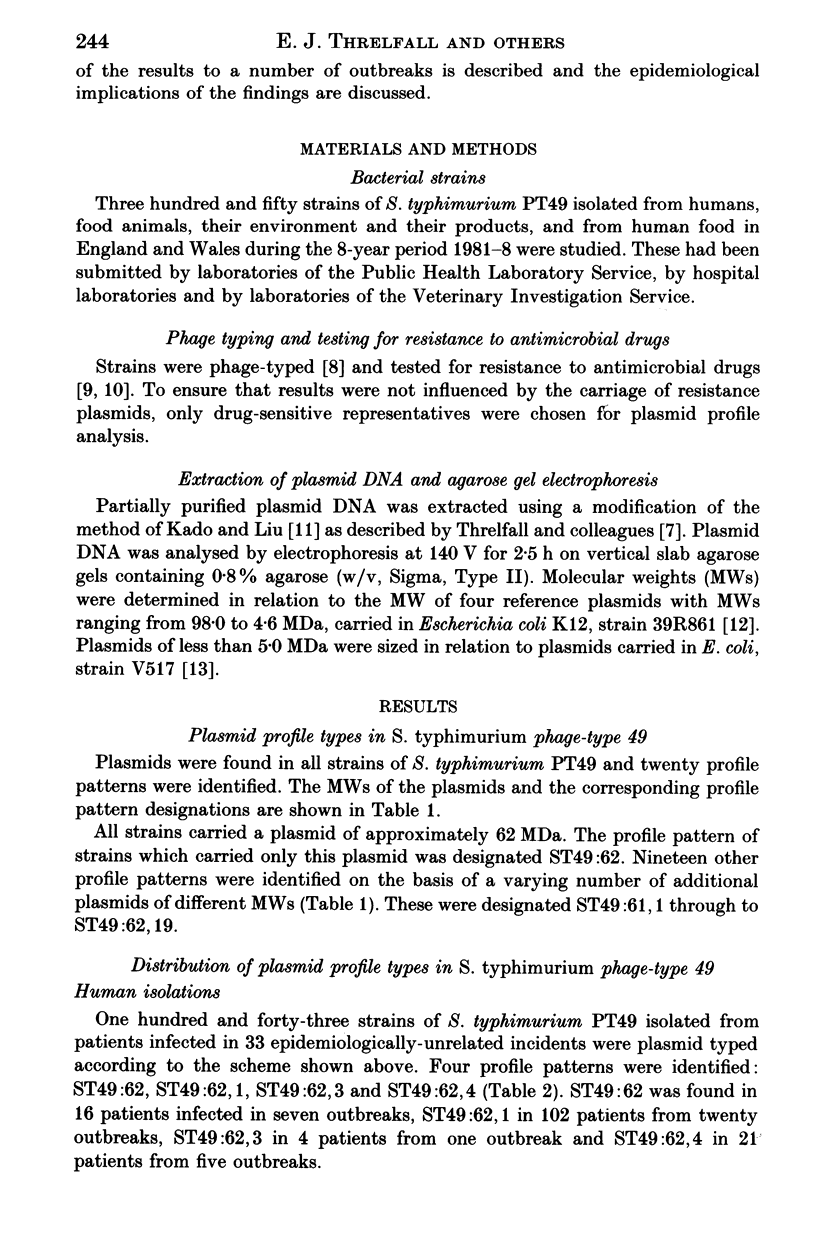
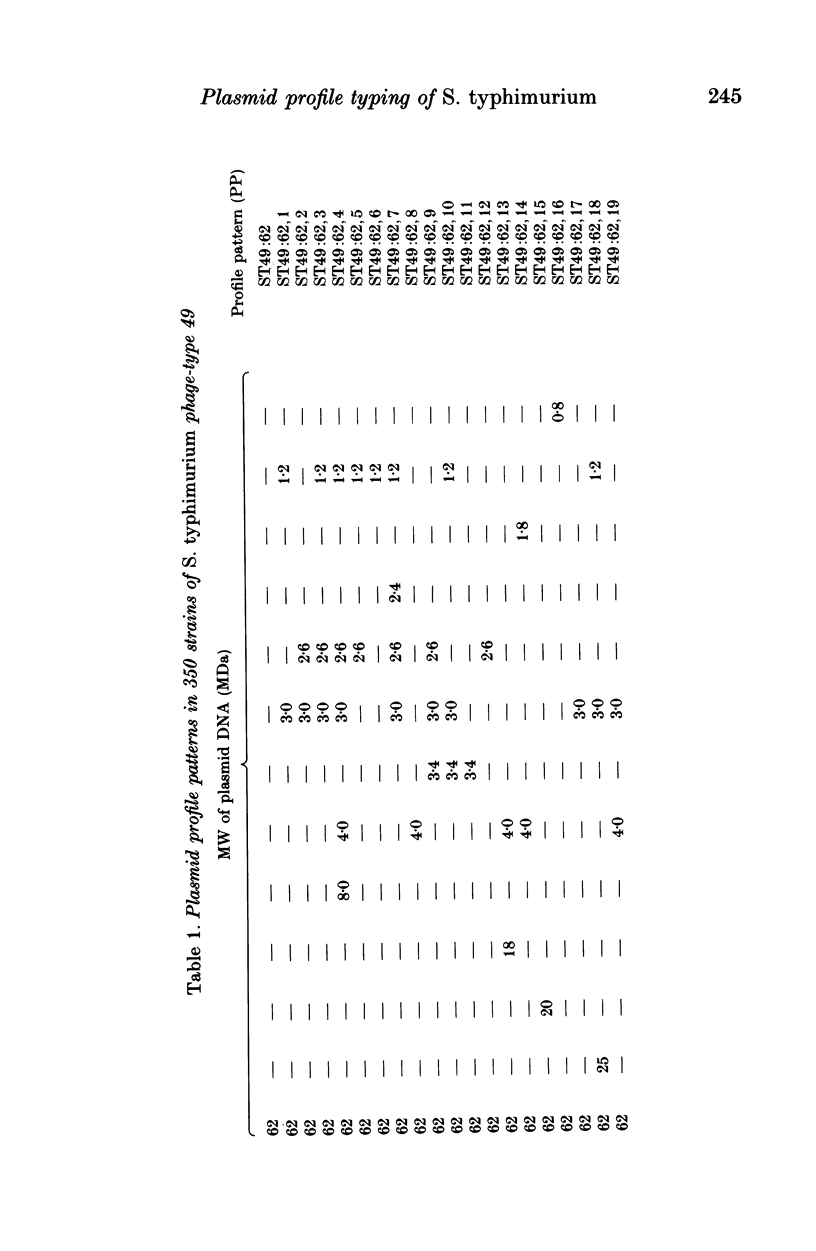
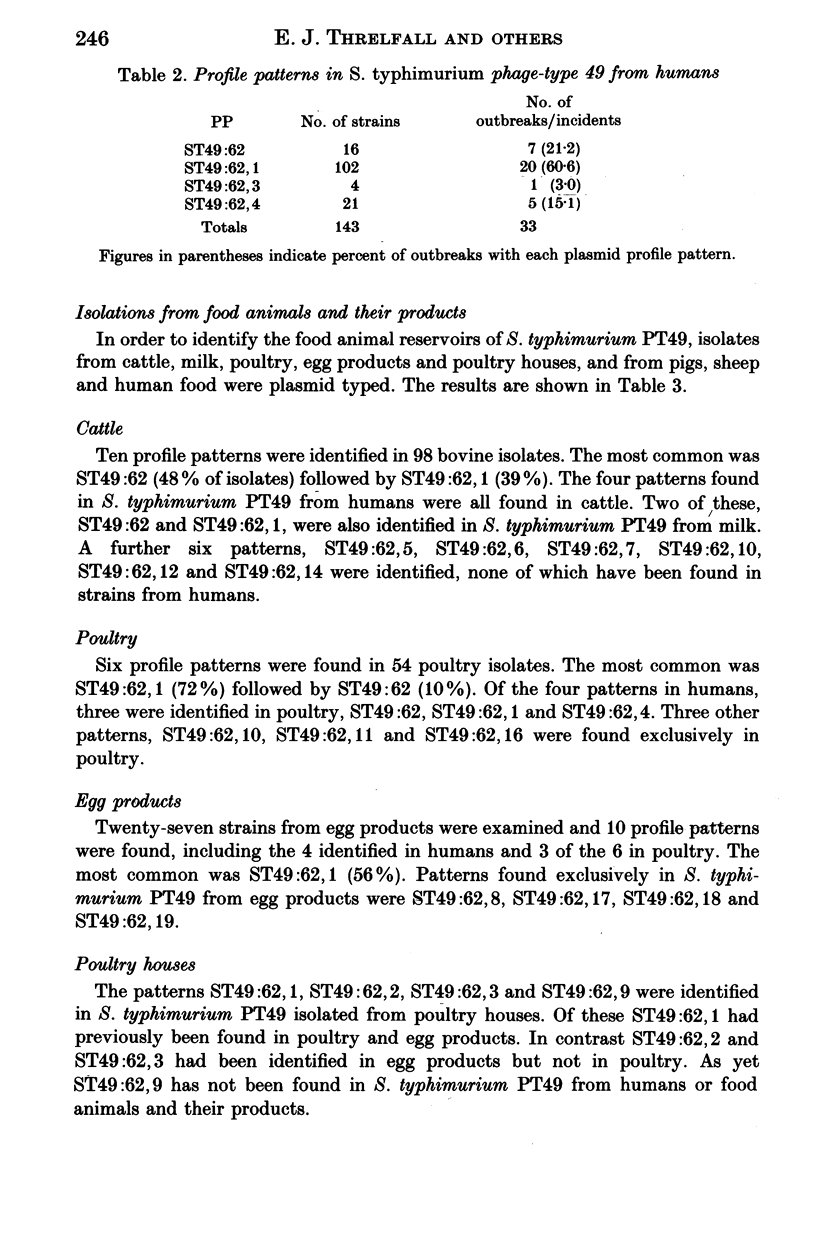
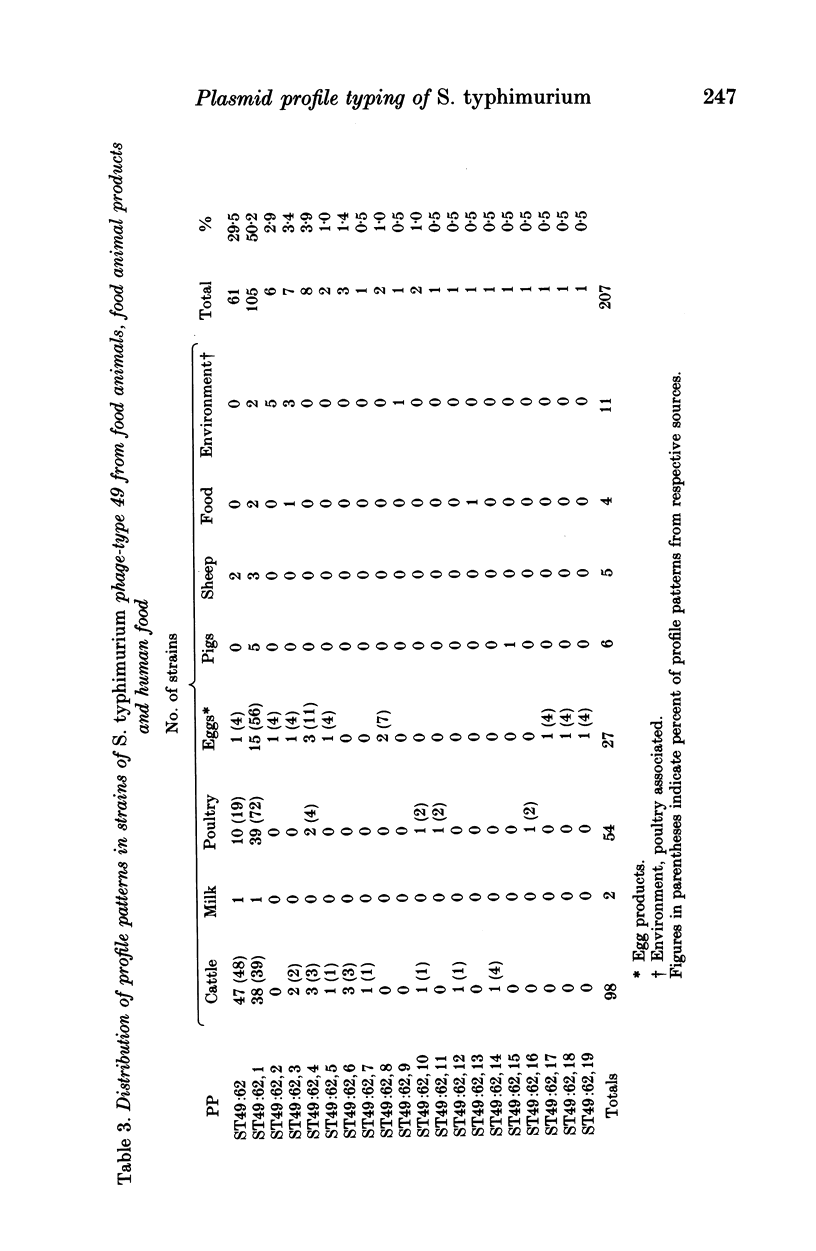
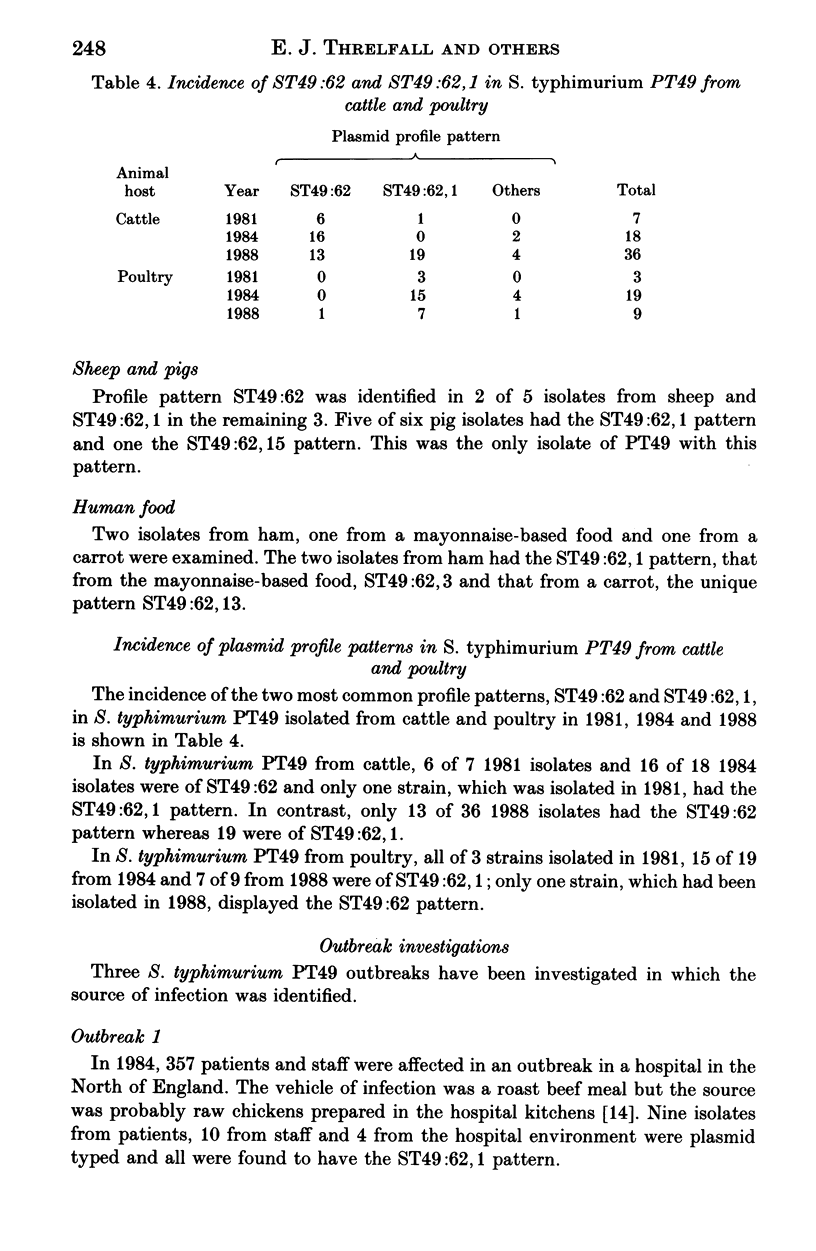
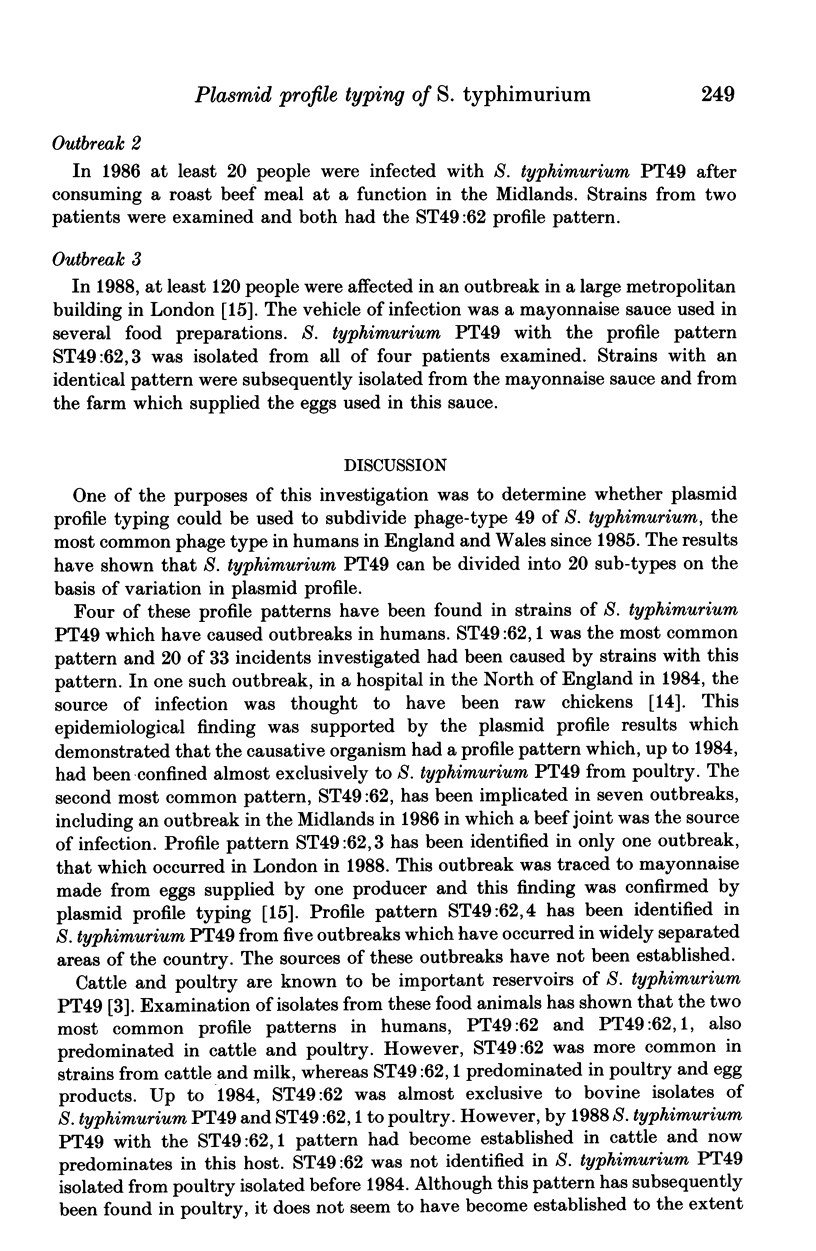
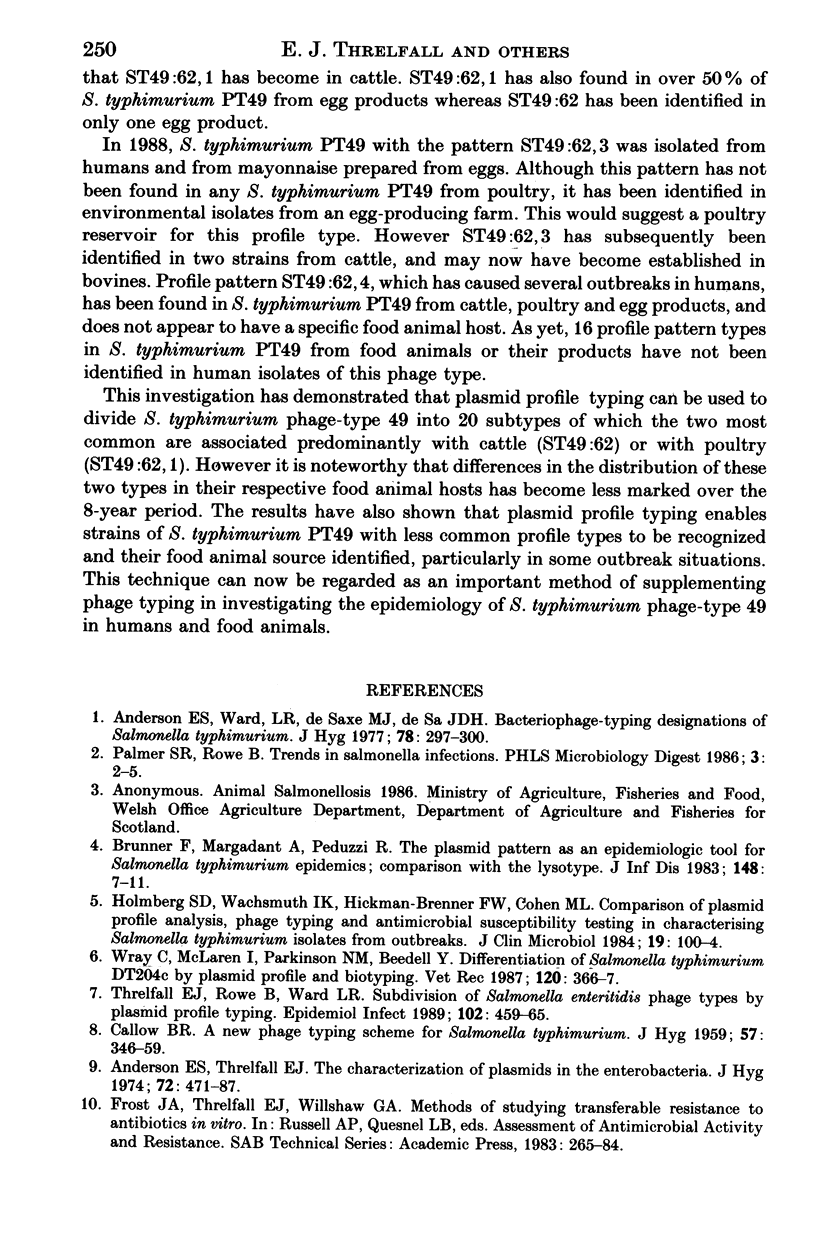
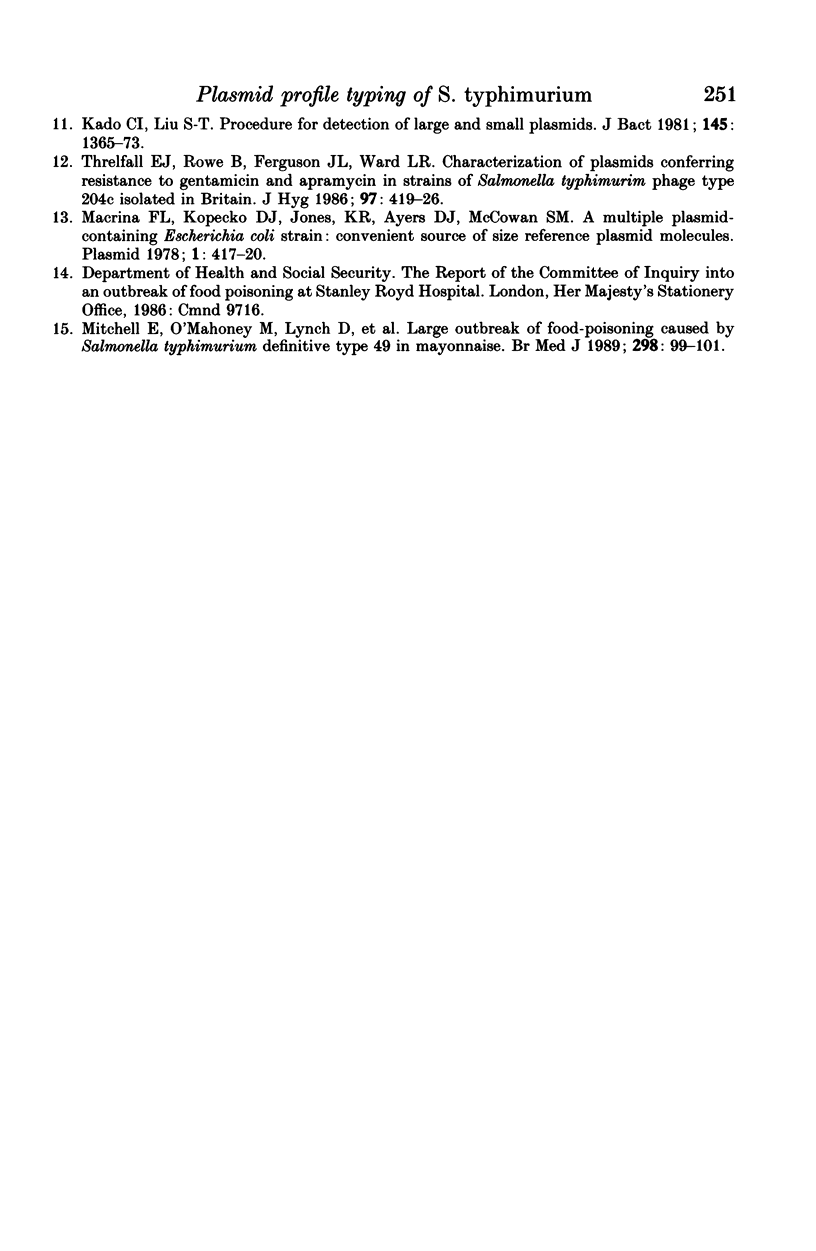
Selected References
These references are in PubMed. This may not be the complete list of references from this article.
- Anderson E. S., Ward L. R., Saxe M. J., de Sa J. D. Bacteriophage-typing designations of Salmonella typhimurium. J Hyg (Lond) 1977 Apr;78(2):297–300. doi: 10.1017/s0022172400056187. [DOI] [PMC free article] [PubMed] [Google Scholar]
- Brunner F., Margadant A., Peduzzi R., Piffaretti J. C. The plasmid pattern as an epidemiologic tool for Salmonella typhimurium epidemics: comparison with the lysotype. J Infect Dis. 1983 Jul;148(1):7–11. doi: 10.1093/infdis/148.1.7. [DOI] [PubMed] [Google Scholar]
- CALLOW B. R. A new phage-typing scheme for Salmonella typhi-murium. J Hyg (Lond) 1959 Sep;57:346–359. doi: 10.1017/s0022172400020209. [DOI] [PMC free article] [PubMed] [Google Scholar]
- Holmberg S. D., Wachsmuth I. K., Hickman-Brenner F. W., Cohen M. L. Comparison of plasmid profile analysis, phage typing, and antimicrobial susceptibility testing in characterizing Salmonella typhimurium isolates from outbreaks. J Clin Microbiol. 1984 Feb;19(2):100–104. doi: 10.1128/jcm.19.2.100-104.1984. [DOI] [PMC free article] [PubMed] [Google Scholar]
- Kado C. I., Liu S. T. Rapid procedure for detection and isolation of large and small plasmids. J Bacteriol. 1981 Mar;145(3):1365–1373. doi: 10.1128/jb.145.3.1365-1373.1981. [DOI] [PMC free article] [PubMed] [Google Scholar]
- Macrina F. L., Kopecko D. J., Jones K. R., Ayers D. J., McCowen S. M. A multiple plasmid-containing Escherichia coli strain: convenient source of size reference plasmid molecules. Plasmid. 1978 Jun;1(3):417–420. doi: 10.1016/0147-619x(78)90056-2. [DOI] [PubMed] [Google Scholar]
- Mitchell E., O'Mahony M., Lynch D., Ward L. R., Rowe B., Uttley A., Rogers T., Cunningham D. G., Watson R. Large outbreak of food poisoning caused by Salmonella typhimurium definitive type 49 in mayonnaise. BMJ. 1989 Jan 14;298(6666):99–101. doi: 10.1136/bmj.298.6666.99. [DOI] [PMC free article] [PubMed] [Google Scholar]
- Threlfall E. J., Rowe B., Ferguson J. L., Ward L. R. Characterization of plasmids conferring resistance to gentamicin and apramycin in strains of Salmonella typhimurium phage type 204c isolated in Britain. J Hyg (Lond) 1986 Dec;97(3):419–426. doi: 10.1017/s0022172400063609. [DOI] [PMC free article] [PubMed] [Google Scholar]
- Threlfall E. J., Rowe B., Ward L. R. Increase in prevalence of a neomycin/kanamycin-sensitive variant of S typhimurium DT204c in cattle in Britain. Vet Rec. 1987 Apr 11;120(15):366–367. doi: 10.1136/vr.120.15.366. [DOI] [PubMed] [Google Scholar]
- Threlfall E. J., Rowe B., Ward L. R. Subdivision of Salmonella enteritidis phage types by plasmid profile typing. Epidemiol Infect. 1989 Jun;102(3):459–465. doi: 10.1017/s095026880003017x. [DOI] [PMC free article] [PubMed] [Google Scholar]


